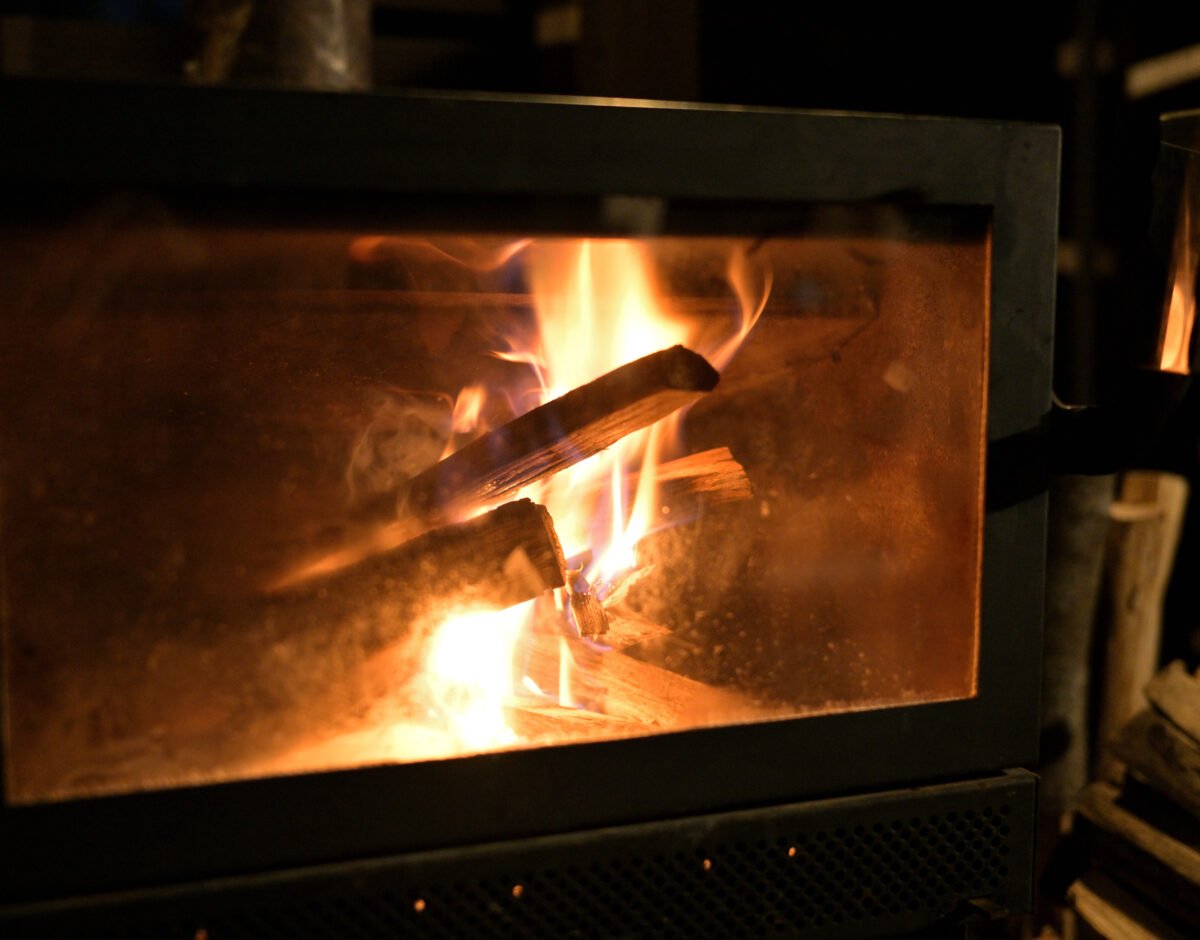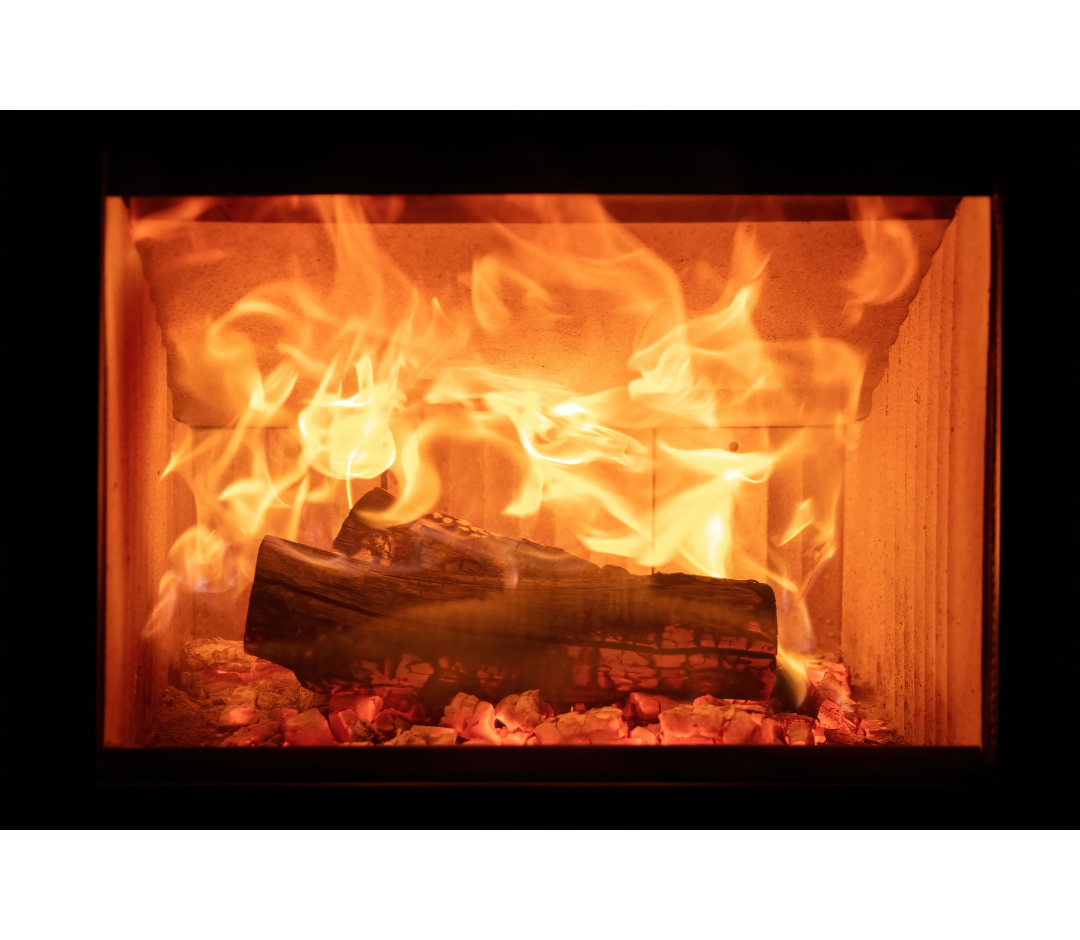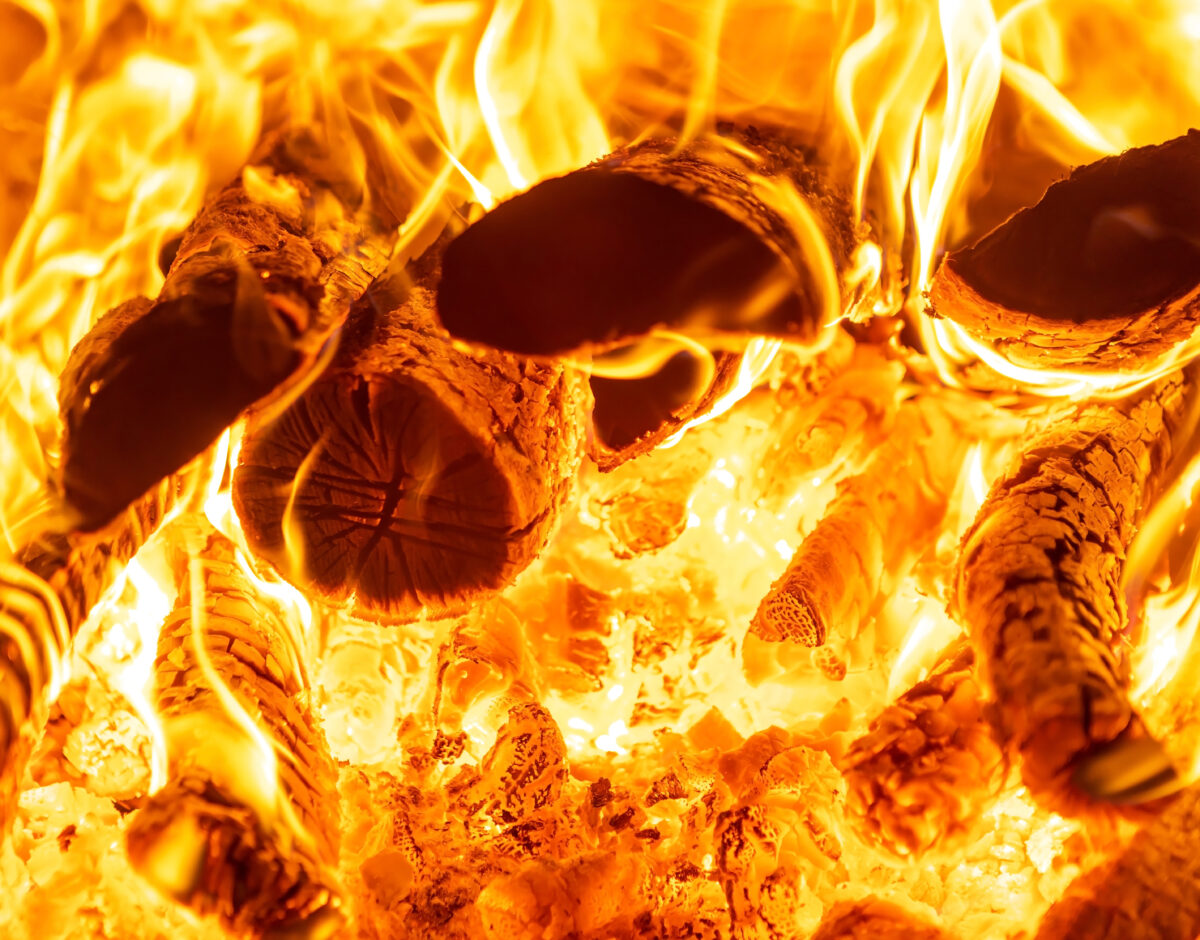Overfiring your wood-burning stove can lead to potentially disastrous problems. It is vital to burn responsibly and not exceed your stove’s maximum temperature – prolonged and repeated overfiring can lead to increased deterioration and even permanent damage to your stove.
Any surface of your installation appearing red-hot is reason for alarm – for this to occur, the temperature will have been excessively high for a significant length of time and will need to be reduced. Cooling an overfiring stove requires caution and patience – keep reading to learn how to identify overfiring and how to stop it from happening to you.
Also known as a runaway burn, overfiring is simply your fire burning too hot for your stove. Every stove is designed to unique specifications and has a maximum temperature that it is capable of withstanding. A number of issues arise when your stove’s fire gets out of control and produces excessive amounts of heat. It is unlikely that your warranty will cover damages resulting from prolonged overfiring.

After you have lit your fire and it has risen in intensity, you will usually partially close the air supply to allow your fire to burn efficiently and safely. However, other factors can affect your fire and potentially cause it to burn out of control. Overfiring is the result of the production of an excessive amount of heat and can cause irreparable damage to your appliance or even cause a chimney fire.
Overfiring is caused by an excess of oxygen or fuel. Oxygen, fuel, and heat are the three components of a fire – increasing one of these will increase the intensity of a fire. When your stove has too much wood or an excessive amount of airflow, it can cause it to overfire as these factors increase the amount of fuel and oxygen, respectively.
Overloading your stove with wood provides an excess of fuel, creating a runaway burn that becomes uncontrollably hot whilst also potentially blocking the tertiary air vents and preventing the secondary burn of gases.
Too much airflow feeds your fire too much oxygen, causing it to burn excessively. Excessive airflow can result from leaving the stove door open, improper air vent usage, or deteriorated rope seals.
Your stove’s manufacturer’s instructions will contain further information on its maximum load and optimum air control usage.
During operation, you can identify signs of overfiring by looking out for:
On a cooled stove, overfiring is evidenced by:
Recognising when your fire is burning too hot is often quite easily apparent, either visually or by the uncomfortable amount of heat in the room. If you can identify when and how you have accidentally caused your stove to overfire, you can prevent it from happening again.
Burning for prolonged periods of time at temperatures not suitable for your appliance leads to safety concerns and will damage components of your stove.
Firewood is consumed much more quickly when burning excessively hot. This wastes fuel and creates the need to refuel much more often.
Your room will become uncomfortably hot as the fire rages and emits too much heat. This is often due to your stove’s heat output not matching the size and insulation of your room, leading to the temptation of burning at too low a temperature, causing incomplete combustion.
The exterior of your stove will reach high temperatures, posing risks to nearby furnishings and potentially resulting in the material warping, cracking, or bending.
Airwash systems can become damaged when overfiring, affecting your appliance’s stove glass and causing repeated blackening.
Consumable deterioration will occur at a significantly increased rate when your stove is consistently overfired, causing your:
Chimney fire risk heightens due to the temperature of the gases in your flue increasing, causing any residual debris – such as soot or creosote – to have a higher likelihood of igniting and causing a chimney fire.
A key part of owning a stove is learning and understanding its operation; the more you use your stove the more confident you will get with its use. Every installation is different and subject to a multitude of variables that can affect your fire, from weather conditions to air control use. To avoid overfiring your wood burner, follow these tips:

Simply put, burning responsibly and keeping your stove well maintained vastly reduces the probability of it overfiring – and will also keep you burning safely and efficiently.
An overfiring stove is dangerous and it is important that you are cautious when interacting with it. There are some inadvisable ways to cool down an overfiring stove that can result in additional hazards, so it is important to understand how to approach the situation.
To cool down an overfiring stove, you will need to reduce the airflow by partially closing the air vents, reducing the oxygen intake. This will slowly lower the temperature as your fire’s oxygen supply depletes, calming the fire and bringing your stove down to a more appropriate temperature. Patience is key – this will take some time and will require monitoring to ensure your fire does not deplete so much that incomplete combustion occurs. Once your fire has returned to the optimal temperature, be sure to remember to adjust your air control vents accordingly.
If your stove is overfiring, it is key that you safely reduce the temperature without producing additional hazards. When trying to cool down an overfiring stove, do not:
As with most things, preventing the issue is much better than having to deal with the consequences it brings. Always burn responsibly, follow the manufacturer’s instructions, and keep your installation well maintained to prevent the risk of a runaway burn occurring.
Just as you can burn too hot in your stove, you can equally not burn hot enough. If your fire is too low a temperature, it is likely that incomplete combustion will occur, causing a number of issues such as reduced heat and increased emissions.
It is important to use a stove with a heat output that matches your room. If your stove is too large for your room, it may be tempting to run it at a sub-optimal temperature by turning the controls down so that you can stay comfortable – this is called ‘slumbering’. Slumbering your stove can be extremely dangerous and should be avoided unless your appliance is specifically designed to do so.
Speak to your HETAS Approved Retailer to make sure you select the right size stove for your home.

Overfiring your stove brings both safety and monetary issues – your wood burner is designed to withstand up to a specified temperature. Exceeding the maximum temperature will cause increased deterioration and damage to your appliance so it is important to burn responsibly, follow the manufacturer’s instructions, and keep your installation well maintained so you can continue burning optimally.
If you are ever worried or unsure about something related to your wood-burning stove, contact your HETAS Approved Servicing Technician to visit and investigate. They have the experience, expertise, and skills to identify and rectify any faults, keeping you burning safely.
The HETAS Advice Hub has a range of tips to help you get the most from your stove.
The HETAS Advice Hub has a range of tips to help you get the most from your stove.
HETAS Ltd
HETAS, Severn House, Unit 5 Newtown Trading Estate, Green Lane, Tewkesbury, GL20 8HD
HETAS
Severn House
Unit 5 Newtown Trading Estate
Green Lane
Tewkesbury
GL20 8HD
"*" indicates required fields
Notifications